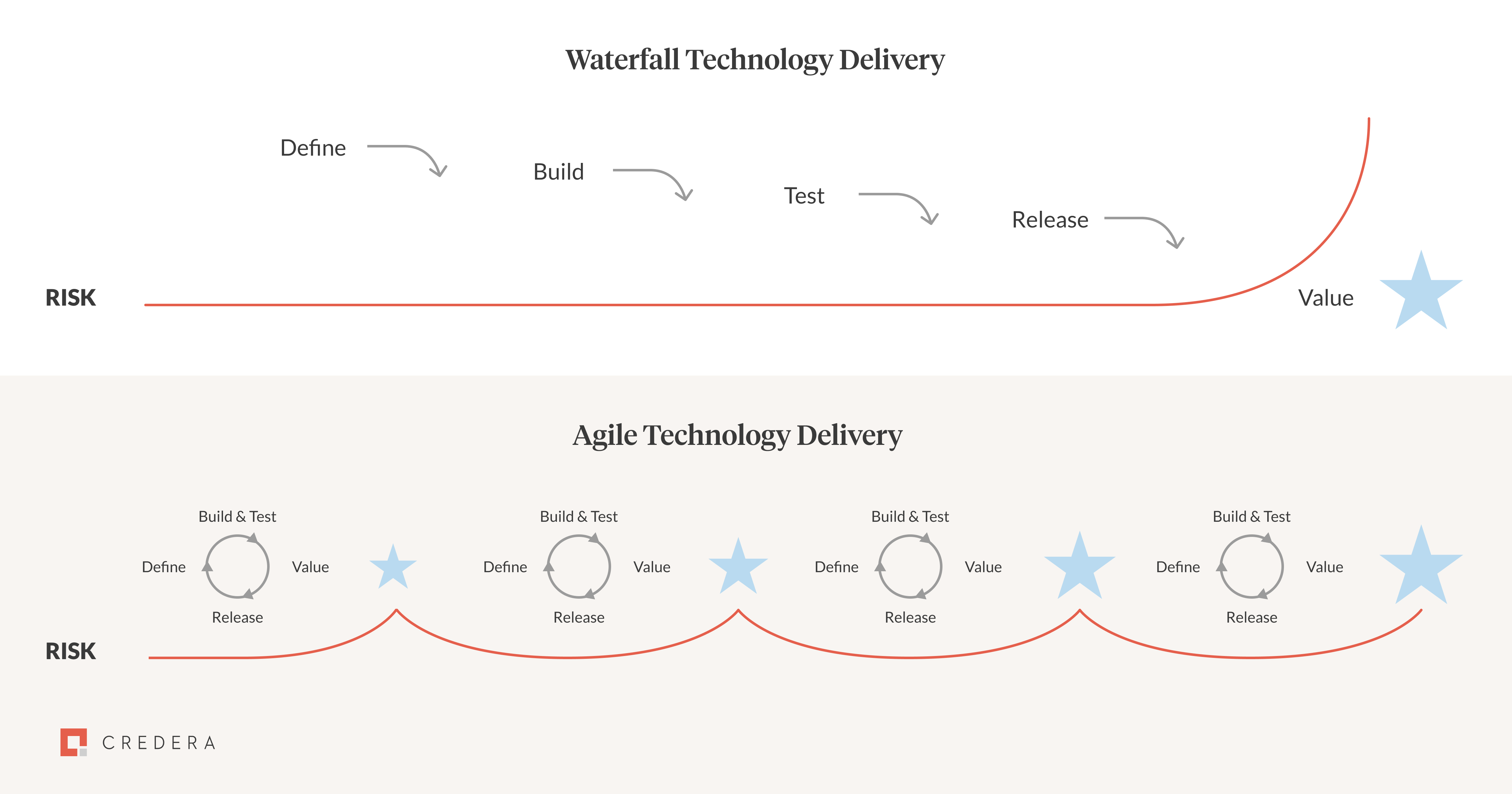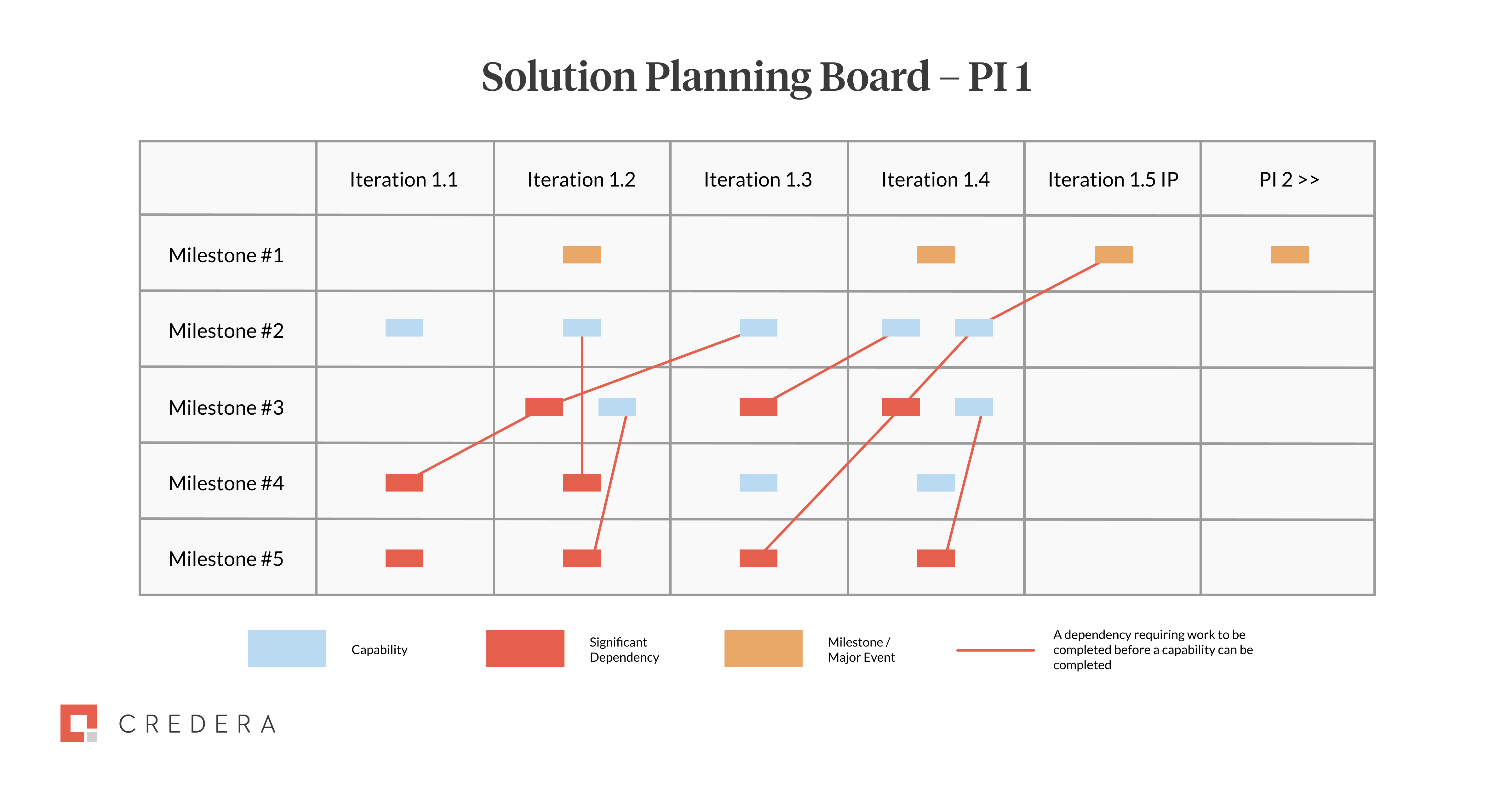Transformation
Dec 03, 2021
Waterfall or Agile? Or Both?: A Hybrid Project Management Approach

By now, business leaders know the difference between waterfall and agile methods of project management and software development. Odds are your organization is trying to become more “agile” in some way by instituting daily scrums, organizing work into two-week sprints, or purchasing software such as JIRA or Asana to manage work.
We have certainly seen the waterfall methodology decline in popularity as companies want to move away from rigid, sequential planning. But old habits are hard to kick and often, despite the best intentions to religiously adhere to the agile manifesto, companies find themselves slipping back into their waterfall ways. This can be seen as a failure to successfully implement agile.
Everyone's Going Agile, Right?
However, in many organizations, striving to reach agile purism may not be feasible with decades of organizational inertia resisting change. Effective project management leans into those realities, rather than trying to fight them.
At Credera, we partner with many of our clients to adopt an approach of “hybrid project management,” where aspects of waterfall and agile are combined to fit the client’s needs. In this article, we’ll outline Credera’s hybrid method of project management, why we believe it is effective, and illustrate with examples of client success.
What is the Hybrid Method of Project Management?
While the concept of hybrid project management could combine any number of methodologies, we’re going to focus on the fusion of waterfall and agile as they are the prevailing methods in today’s landscape.

Many leaders recognize the wholesale shift to agile would be too disruptive to their employees and operations to occur all at once. The skill set and discipline to enact the iterative cycles of define, build, test, and release take time to cultivate. This is where hybrid project management steps in to combine the organizational benefits of waterfall, which relies on upfront definition and planning to recognize value long term, with the flexibility benefits of agile, which delivers value iteratively in shorter time intervals.
Trying a Scaled Agile Approach
Credera helped implement a hybrid approach at a large U.S.-based airline using scaled agile. Scaled agile plans work on a 10-week cadence, known as a program increment (PI), made up of five two-week sprints, known as iterations. These increments allow leaders to perform more upfront planning and dependency identification beyond the next sprint, like waterfall, while only sacrificing some of the flexibility for teams to adapt their work to changing priorities. We were able to revamp our client’s intake and prioritization process for new work, as well as improving the 10-week planning process to better call out dependencies and complete time-sensitive work efficiently.
The end result for this particular client has been better alignment on dependencies for large initiatives than a pure agile approach and more responsive teams than a strict waterfall approach.

Scoping out the Right Approach
But sometimes there is not a clear playbook or framework to implement and the specifics of how an organization manages projects depends on existing organizational structures, culture, and industry. Only after partnering with our clients to develop a full understanding of current ways of working can we identify how we implement hybrid project management for the future.
We have done this exercise with a large U.S.-based restaurant chain. The size and scope of many initiatives at this company were so large that a role was necessary outside product development teams to highlight dependencies and plan long-term alignment between disparate departments. While this role does not typically exist in a “pure” agile organization, it suited the reality of our client needing someone to keep an initiative moving toward completion.
One day that role may be obsolete because teams manage dependencies among themselves, but for now, this hybrid approach has seen success. They have been able to reap many of the benefits of agile, such as faster deployments, but also making sure separate features are delivered on schedule to fit the broader organizational initiatives.
Don't Get Caught Up in Methodologies
It’s tempting to get caught up with the idea that selecting a certain project management methodology will be the key to success. But the truth is that agile, waterfall, scaled agile framework (SAFe), lean six, or whatever new methodology comes to market will likely not be a perfect fit for your organization. Rather than trying to make one model fit, the best project management approach will take concepts and principles to form a hybrid method that suits the task at hand.
We believe this approach can be more difficult, but results in better ways of working, less drastic change, and better outcomes. We explore this in-depth in a related article that examines lessons learned from our partnership with a Spanish pharmaceutical and chemical manufacturer.
Discover What Project Management Style Fits Your Company
If your organization is wondering which project management methodology should be used for your next big initiative, reach out to us at marketing@credera.com to learn more about our world-class project and program leadership capabilities. We’d be happy to share success stories from clients across a variety of sizes and industries.
Contact Us
Let's talk!
We're ready to help turn your biggest challenges into your biggest advantages.
Searching for a new career?
View job openings


